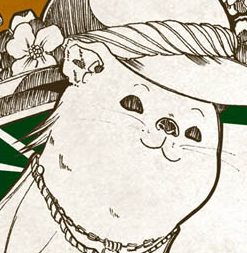
TYPOGRAPHY I MASTERLIST
Below is a masterlist of OSS posts done for Typography I during the semester!
ASSIGNMENTS
Assignment 1: Comic Sans Presentation (with Claire, Joel, Melo and Louisa)
Assignment 2 The Walls Have Ears! Part 1/3: https://oss.adm.ntu.edu.sg/laum0005/typography-i-assignment-2-the-walls-have-ears-part-1-3/
Assignment 2 The Walls Have Ears! Part 2/3: https://oss.adm.ntu.edu.sg/laum0005/typography-i-assignment-2-the-walls-have-ears-part-2-3/
Assignment 2 The Walls Have Ears! Part 3/3 (Outcome): https://oss.adm.ntu.edu.sg/laum0005/typography-i-assignment-2-the-walls-have-ears-part-3-3/
Assignment 3 Archetypes and Typography Part 1/2 (Process): https://oss.adm.ntu.edu.sg/laum0005/typography-i-assignment-3-archetypes-and-typography-part-1-2/
Assignment 3 Archetypes and Typography Part 2/2 (Outcome): https://oss.adm.ntu.edu.sg/laum0005/typography-i-assignment-3-archetypes-and-typography-part-2-2/
TYPOGRAPHER OF THE WEEK
Jan Tschichold: https://oss.adm.ntu.edu.sg/laum0005/typography-i-typographer-of-the-week-jan-tschichold/
Massimo Vignelli: https://oss.adm.ntu.edu.sg/laum0005/typography-i-typographer-of-week-3-massimo-vignelli/
Neville Brody: https://oss.adm.ntu.edu.sg/laum0005/typography-i-typographer-of-week-4-neville-brody/
Paula Scher: https://oss.adm.ntu.edu.sg/laum0005/typography-i-typographer-of-week-5-paula-scher/
Jonathan Barnbrook: https://oss.adm.ntu.edu.sg/laum0005/typography-i-typographer-of-week-6-jonathan-barnbrook/
Erik Spiekermann: https://oss.adm.ntu.edu.sg/laum0005/typography-i-typographer-of-week-7-erik-spiekermann/
Herb Lubalin: https://oss.adm.ntu.edu.sg/laum0005/typography-i-typographer-of-week-8-herb-lubalin/
Tobias Frere-Jones: https://oss.adm.ntu.edu.sg/laum0005/typography-i-typographer-of-week-9-tobias-frere-jones/
READINGS AND REVIEWS
Type Speaks: https://oss.adm.ntu.edu.sg/laum0005/typography-i-type-speaks-1948/
Thinking with Type (Letter): https://oss.adm.ntu.edu.sg/laum0005/typography-i-thinking-with-type-letter/
The Crystal Goblet by Beatrice Warde: https://oss.adm.ntu.edu.sg/laum0005/typography-i-the-crystal-goblet-by-beatrice-warde/
On The Elements of Typographic Style: https://oss.adm.ntu.edu.sg/laum0005/typography-i-on-the-elements-of-typographic-style/
“Wake up and smell the fonts” by Sarah Hyndman: https://oss.adm.ntu.edu.sg/laum0005/typography-i-wake-up-and-smell-the-fonts-by-sarah-hyndman/
Archetypes and Typography: https://oss.adm.ntu.edu.sg/laum0005/typography-i-archetypes-and-typography/
Readings on Grids + Walk to enhance creative thinking: https://oss.adm.ntu.edu.sg/laum0005/typography-i-readings-on-grids-and-the-walk-to-improve-creative-thinking-week-10/
IN-CLASS ACTIVITIES AND HOMEWORK
Type in the Wild: https://oss.adm.ntu.edu.sg/laum0005/typography-i-type-in-the-wild/
Expressive words, Opposing Pairs: https://oss.adm.ntu.edu.sg/laum0005/typography-i-in-class-activity-4-expressive-words-opposing-pairs/
Haiku (Hamster): https://oss.adm.ntu.edu.sg/laum0005/typography-i-in-class-activity-5-haiku/
Play Nice: https://oss.adm.ntu.edu.sg/laum0005/typography-i-in-class-activity-6-play-nice/
Automatic Drawing: https://oss.adm.ntu.edu.sg/laum0005/typography-i-automatic-drawing/
A Lesson in Pattern (Illustrator): https://oss.adm.ntu.edu.sg/laum0005/typography-i-in-class-activity-7-a-lesson-in-pattern-illustrator/
Custom Drop Cap: https://oss.adm.ntu.edu.sg/laum0005/typography-i-drop-cap-class-activity/
Word Association (Lover): https://oss.adm.ntu.edu.sg/laum0005/typography-i-in-class-activity-word-association-lover/
Menu (In-Design Exercise): https://oss.adm.ntu.edu.sg/laum0005/typography-i-in-class-activity-menu-making-in-indesign/
OTHERS
First Impressions & Group Allocation: https://oss.adm.ntu.edu.sg/laum0005/typography-i-first-impressions-of-the-course-and-group-allocations/








































